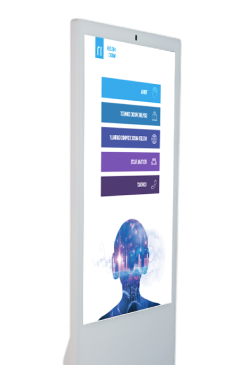

Event Solutions

Our Work

The Future of America's Economy is in the Hands of Self-Service Technology
So much of what is emerging from the tech world right now is supporting self-service technology options for consumers to be able to 'get stuff done in ways that would have before always meant speaking with another human being. This isn’t just AI, airport-style kiosk computers, and chatbots (though it does contain all three); this is self-service technology where organizations have worked to construct automation layers into their business so that self-service ‘tickets’ for IT can be executed without a service agent needing to actually engage, or show up at a user’s desk. It is also the extended use of AI to ‘talk’ to humans, the capability for social media platforms to communicate with you on increasingly direct (but fundamentally automated) interactions... and for IT systems to remind you to be at the dentist by text message and so on. Of course, not all self-service technology examples have a place in every business. That said, every public-facing sector of the economy has found numerous uses for the sort of self-service technology you will see listed below. If you want to find out more about the sort of modernization that is going on in the field of self-service and automation, then read on.
Automated Service
Slowly but surely, the hotel and retail industries are adopting self-service technology. Many hotels have check-in and check-out kiosks to make guests ‘arrivals more enjoyable and less turbulent. More appropriate, digital self-service cannot be ignored in the modern world.
Self-Ordering Technology
This technology is a growing trend in the restaurant industry. This kind of technology rises operational effectiveness as well as increases customer service by taking off the burden of standing in a line. McDonald’s is one of the biggest names that already adopted self-service technology. Their kiosks have been in test since 2003 in the United States and as of this year, they will be installed at all U.S. locations. It’s progressively hard to find retail shops, restaurants, and public spaces that don’t use self-service technologies in some form. We all want to get things done fast, without having to strain over how the service will be. That is why more and more regularly, businesses are employing self-service applications to expand their customer service and reduce costs. Moreover, if you are still not absolutely convinced that self-service is the best way to be assisted, many companies are implementing the combination of self-service technologies with human customer service. That way, they please both needs of customers: speed and personalized service.